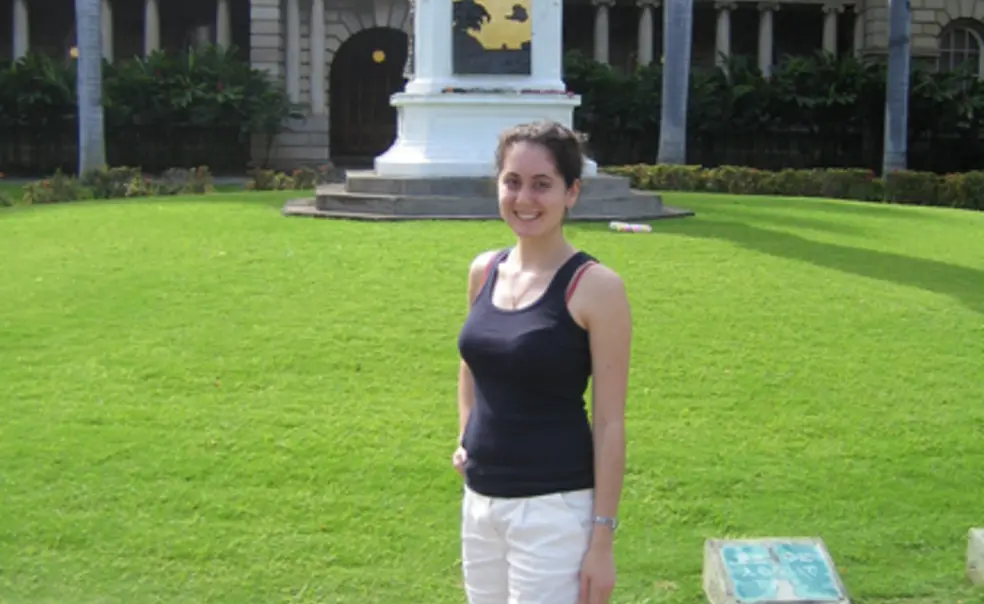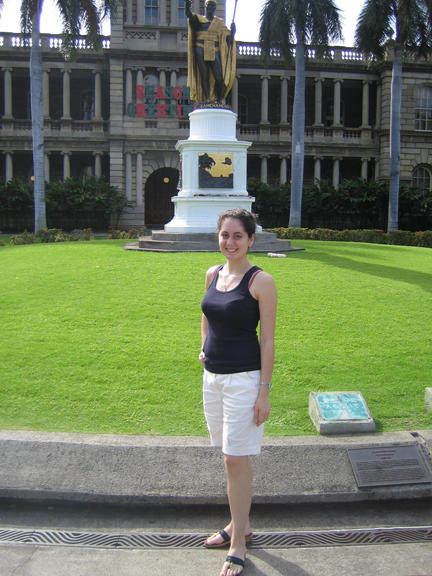Tigers in fiction
Fictional Princetonians: A Weekly Blog quiz
In the new film Watchmen, a fictional Princeton alumnus named Jon Osterman ’52 *58 accidentally becomes trapped in a nuclear experiment that gives him superhuman powers (and a glowing blue body). The fate of Osterman, a.k.a. "Dr. Manhattan," may be unique, but the presence of a Princetonian in a movie is not.
Last year, Burn After Reading, written and directed by Ethan Coen ’79 and his brother, Joel, featured former CIA analyst Osbourne Cox ’73 (John Malkovich), and another film, The Day the Earth Stood Still, included a Princeton astrobiology professor named Helen Benson (Jennifer Connelly). The trend carries over to books and TV, too. Author John Grisham admitted that parts of his recent novel, The Associate, initially were set at Princeton's law school -- until he realized that Princeton has no law school.
How well do you know Princeton's fictional alumni? Take our Weekly Blog quiz, which covers Tigers in the movies, on TV, and in novels, and send your answers to btomlins@princeton.edu. If you answer all six questions correctly, you could win a copy of The Best of PAW, 1900-2000. (One winner will be chosen randomly from the correct entries.)
1. The character Robert Cohn in Ernest Hemingway's The Sun Also Rises was an undergraduate boxing champion at Princeton. Which real-life 1939 alumnus played Cohn in the novel's 1957 movie adaptation?
a. Jimmy Stewart
b. Jose Ferrer
c. Mel Ferrer
2. Neil Patrick Harris played a precocious TV doctor who, according to the script, earned his Princeton diploma at age 10. Name the character.
a. Doogie Howser
b. Billy Kronk
c. Mark Greene
3. There was "something about" fictional alumna Mary Jensen in a 1998 comedy hit that starred Ben Stiller and this actress in the title role.
a. Jennifer Aniston
b. Drew Barrymore
c. Cameron Diaz
4. Former Tiger football star Dean Cain ’88 donned a cape as TV's Superman in the 1990s. What other comic-book hero attended Princeton -- and dropped out -- in a 2005 Christian Bale film?
a. Spiderman
b. Batman
c. Ironman
5. Jude Law played wealthy (and fictional) alumnus Dickie Greenleaf in a 1999 role, while Matt Damon's character simply pretended to be a Princeton man. Name the movie.
a. Good Will Hunting
b. The Talented Mr. Ripley
c. Six Degrees of Separation
6. With an apparent job promotion on the way, which character from TV's 30 Rock quipped, "I wish I had a Princeton reunion right now"?
a. Tracy Jordan
b. Liz Lemon
c. Jack Donaghy
Senior thesis spotlight: Oahu's 'boogie houses'
For sailors stationed at Pearl Harbor during World War II, going to "boogie houses" and "climbing the stairs" were euphemisms for visiting brothels in Oahu.
Rosa Marie Maiorella '09 spent her winter break conducting research for her history senior thesis, poring over military papers, news articles, oral histories, and board of health reports housed at the Hawaiian State Archives in Honolulu and at the University of Hawaii, Manoa, to study the social and political effects of those prostitution houses. The brothels were frequented by approximately 250,000 men per month during the war years.
Long before the war, the brothels were openly accepted and regulated. Formally registered as "entertainers," Oahu's prostitutes paid taxes and were examined every week by doctors required to report venereal diseases to prevent the spread of sexually transmitted diseases among citizens. Though prostitution was a viable "job," prostitutes were restricted to the red light district, were not allowed to walk the streets, and could not go to public beaches. "They were second-class citizens," Maiorella said.
Then the military arrived.
Sailors lined the streets around brothels, waiting to pay $3 for a three-minute interval with a prostitute and goading the military police to lift social stigmas and restrictions against them. During the war, prostitutes began to move into residential areas where they could live normal lives and commute to the red light district where they worked.
"They really saw themselves as patriots who were helping the war effort," Maiorella said of the women who also rolled bandages, gave blood, bought war bonds, and volunteered with wounded soldiers in addition to working as prostitutes.
Though the prostitution houses were forced to close in 1944, many citizens of Oahu still supported the brothels. Alice Kamokila ran for and won a race for territorial senate on the platform of reopening the houses in order to protect women from sex crimes and regulate the spread of STDs.
"What's significant is that the military was actively partnered with civil government in regulating Oahu's prostitution," Maiorella said. By Julia Osellame ’09
Above, Rosa Marie Maiorella ’09 in front of the Kamehameha Statue at the old Judiciary Building in Honolulu. (Photo courtesy Rosa Marie Maiorella ’09)
Read other senior thesis spotlights: Chip Snyder ’09 on safari | Adrian Diaz ’09 gets 'Lost'
Commemorating U.S.-China diplomacy

At a Jan. 11-12 commemoration of the 30th anniversary of U.S.-China diplomatic relations, held in Beijing, the 45-member American delegation included five Princetonians: (left to right) Mary Wadsworth Darby ’72, senior sesearch scholar at the Chazen Institute of Columbia Business School and a China Institute trustee; Ginny Kamsky ’74, chairwoman and CEO of Kamsky Associates and chairwoman of the China Institute; Edward Cox ’68, attorney, Patterson, Belknap, Webb & Tyler; R. Stapleton Roy ’56, former U.S. ambassador to China and current director of the Kissinger Institute on China and the United States; and Sara Judge McCalpin ’82, president of China Institute. The Princetonians were part of a delegation led by former President Jimmy Carter. The Chinese People's Institute of Foreign Affairs, the Kissinger Institute on China, and the United States sponsored the event.
(Photo courtesy Sara Judge McCalpin ’82)













No responses yet